Search Results
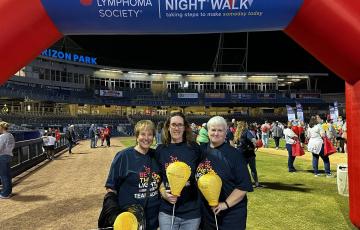
Holly
In 2016, I joined The Leukemia & Lymphoma Society (LLS) Tennessee Chapter as a supportive member of Team Addie. I had friends who became team members the previous year, walking in Nashville’s Light The Night Walk (LTN), and they encouraged me to get involved in the cause with LLS and LTN. Nashville is a city that my friends and I have gained so much love for through the years. I must admit I was hesitant to join at first because blood cancer specifically hadn’t affected my life or the people in it.
Who We Are
The Leukemia & Lymphoma Society is at the forefront of the fight to cure cancer. We are the largest nonprofit dedicated to creating a world without blood cancers. Since 1949, we’ve invested nearly $1.3 billion in groundbreaking research, pioneering many of today’s most innovative approaches.
Cancer is a heck of an opponent.
It's a bully. But we aren't afraid of a fight. It's elusive. But our focus never fades. It's deadly. But we are known, cancer killers.
Side Effects
Cancer treatment for Hodgkin lymphoma can produce side effects. The goal of treatment is to kill the cancer cells, but cancer treatments can damage healthy cells too which causes side effects.
Patients react to treatments in different ways. Some patients may have very mild side effects. For other patients, side effects can be more severe, sometimes requiring hospitalization. For most patients, treatment side effects are temporary and go away once therapy ends.
Coping Tips for Parents
Throughout your child's illness, you'll be focused on comforting your child and helping him or her cooperate with treatment. You may also need to explain what's happening to your other children, answer relatives' questions and perhaps make alternate arrangements for work and childcare. All along the way, you'll be coming to terms with your own feelings and choices.
Finding a Clinical Trial
If you're interested in the possibility of a clinical trial as a treatment option, talk with your doctor first. He or she can help you find an eligible trial.
Choosing a Treatment Center
Selecting a cancer treatment center may depend on several factors including your specific diagnosis, location and insurance coverage. You will want to choose an accredited treatment center with the medical expertise to provide the type(s) of treatment you will need.
Communicating With Your Partner
Discussing experiences, feelings and concerns with your partner(s)—giving each other the chance to talk and listen—is an important part of maintaining or improving your quality of life. Your partner may have his or her own concerns, such as being afraid of hurting you during sex, feeling guilty or selfish for wanting to be intimate with you or not knowing how to talk about their feelings. You may also want to talk about seeking help from a professional, such as a couples counselor or sex therapist.
Diet Guidelines For Immunosuppressed Patients
Food safety is important during and after cancer treatments. The immune system is often weakened by cancer treatments, making the body more susceptible to foodborne illnesses.
Neutropenia is a condition where you have lower-than-normal levels of neutrophils (a type of white cell). If you have neutropenia, following food safety guidelines are especially important. Be sure to follow all food handling guidelines to help protect you from bacteria and other harmful organisms found in some mishandled food and beverages.
Stem Cell Transplantation with High-Dose Chemotherapy
High-dose chemotherapy and stem cell transplantation are important parts of treatment plans for eligible, recently diagnosed myeloma patients.
Refractory and Relapsed
Some patients with myeloma have refractory disease. Refractory myeloma is cancer that does not respond to treatment. After a time, almost all myeloma patients will experience relapse, which means the cancer returns after a successful course of treatment. The treatment for relapsed and refractory myeloma is affected by many factors including previous therapy, rate of relapse, patient health, and genetic abnormalities.
Treatment for Relapsed and Refractory MyelomaTreatment for relapsed or refractory myeloma may include:
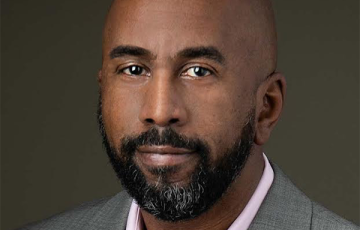
Bryon
In 2017, during a pickup basketball game at the local gym, Bryon Daily was beginning to feel his age, playing against 20-year-olds. A former college track athlete in his early 50s, this fatigue felt different. He also fractured his finger during a routine pass in the game. Bryon’s primary doctor at Kaiser ordered labs including blood and urine, that showed impairment in his protein levels and referred him to a urologist then a hematologist.
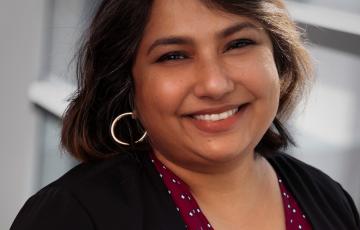
Amrita
November 2007 was the start of my journey as a cancer warrior and survivor. I was diagnosed with Diffused Large B cell non-Hodgkins lymphoma (NHL) and it is incredible for me to reflect on the fact that I am coming up on my 15th year anniversary of diagnosis and treatment. I do hear and read powerful stories of other survivors and in so many ways I think my journey with and after cancer diagnosis resonates with those.

Ed
Like many who get diagnosed with multiple myeloma (MM), it comes out of nowhere. For me, it was mysterious aches and pains that crept up quickly. An alert doctor ordered tests, and eventually, MGUS, the precursor of MM, was first diagnosed. Within a month, MM was confirmed. MM is a blood/bone cancer that can affect the entire body.
For the next six months, I was involved in many tests, along with drug treatments including chemo. I had a stem cell transplant and have generally had a complete response.
Chris
In 2008, my primary doctor noticed that my white blood cells were high (12,000 range) and referred me to a hematologist. The hematologist decided to "wait and see" for a while. From 2008 to 2018, we watched as my white cells slowly grew from 12,000 to 207,000. The oncologist then prescribed and 8-hour infusion of Rituxan. As I sat in the recliner chair with needle in arm, I got several violent reactions from the Rituxan and they pulled out the needle. The doctor told me that I needed a drug called Imbruvica (Ibutrinib). I was

Jessica
Last spring, I was a normal college junior. I had just returned from spring break in the Caribbean with my best friends, and my biggest problem was party planning my 21st birthday that was coming up.
I had a bump on my neck for a few months at that point. I visited several doctors who all assured me it was just a normal swollen lymph node and nothing to be concerned about. My family decided to fly me home for a weekend to get checked out by my pediatrician who we trust. My pediatrician took the lead for further testing.

Laura
I was diagnosed with stage IVB Hodgkin lymphoma (HL) about a week after my 30th birthday in 2018. I was a new mom to an 8-month-old baby and had been experiencing several symptoms of Lymphomas the months after having my son, but I assumed they were from having a child and would never thought in a million years that it was cancer. I received all of my care at The University of Michigan Cancer Center. My NP Dava and my doctor, Dr. Gitlin were top-notch in both my medical and mental treatment and care.
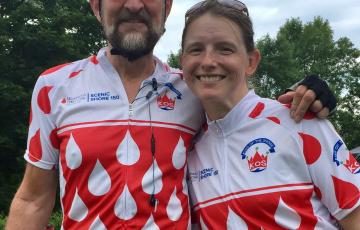
Paul
I have been very active with The Leukemia & Lymphoma Society (LLS) for over 20 years including serving on the Wisconsin Chapter Board and Leadership Development Committee, fundraising for virtually all of the campaigns, patient mentoring, and advocacy leadership. When sharing my story and motives for involvement in “the early years,” I always qualified it by stating that I was motivated not to help myself but to pay it forward and hopefully contribute to improving the quality and quantity of life for future patients and families.
Ron
Ron was a private man. He didn’t seek the company of many. But the friends he had were close, and more than anything, he cherished his time the most with his loving wife and best friend, Paulette. The two of them shared a love for fishing and traveling. They traveled all across the western United States searching for the best fishing spots. They even had a place in Baja California where they spent most of their time fishing together. Ron was unapologetically himself, and he never once cared about what others thought of him.
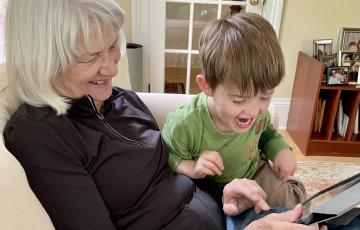
Pauline
I was diagnosed with chronic myelomonocytic leukemia (CMML) in February 2023. I was shocked, never having heard of this disease, and having always considered myself a healthy person. At my annual physical in January 2023, I told my PCP that I seemed to be getting colds more often and they tended to linger. My PCP ordered a CBC. When she got the results, she said they didn't seem quite right and ordered another blood draw. She then called me and told me to see a hematologist oncologist.
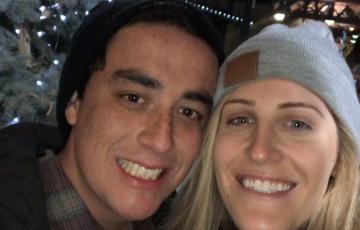
Kara
This story is about my girlfriend of six years, Kara. I was diagnosed with Philadelphia chromosome-positive acute lymphoblastic leukemia (PH+ ALL) in May 2021 and went into the ER on Kara's actual birthday, May 22.
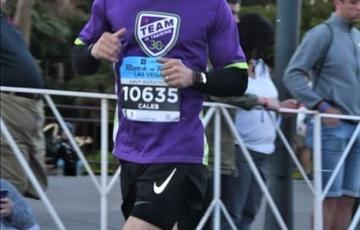
CALEB
November 2017, my life changed forever when I was diagnosed with a fatal form of blood cancer called acute myeloid leukemia (AML). I had no idea what it meant. All I knew is that I woke up one day, like any other, and this time I woke up with a cancer that was going to kill me in a few months. The hardest part of that day was having to tell my Mother that her son has cancer. But after a lot of tears she said to me “Caleb, we’ve got this.” And I just remember that word “we” so vividly. I remember thinking I’m not in this alone. This is a WE thing!

Rebecca
Everything happens for a reason and our pain is not for vain. Hi, my name is Rebecca Yanez, I am 22 years old and a 2x acute lymphoblastic leukemia survivor, as well as a sufferer of rheumatoid arthritis.
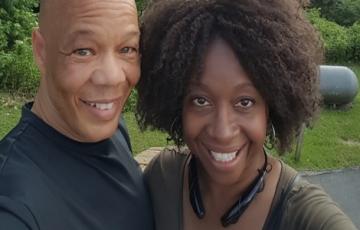
Gezell
Calvin and I are the best of friends, playmates, and hopeless romantics! We found each other in midlife, and we’ve decided to remain newlyweds because we can! We have the privilege of working together every day, and we really love it! Christ is the foundation for our marriage, so the adversities we have faced together made our relationship strong and stable.
